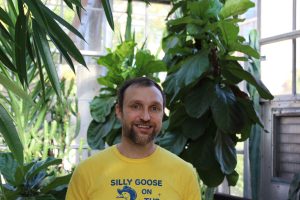
As the old Hippocrates’ adage goes, “Let food be thy medicine and medicine be thy food.” As one of North America’s few original domesticated fruits, the American cranberry (Vaccinium macrocarpon) represents an important case of food and medicine. In general, cranberries have an abundance of flavonoids, beneficial compounds with antioxidant properties that have given the crop ‘superfruit’ status. Of particular interest, A-type proanthocyanins have been associated with reduced incidence of urinary tract infections by inhibiting adherence of uropathogenic E. coli to uroepithilial cells. While anthocyanins are important to the health-promoting aspects of cranberries, differential bioavailability of certain anthocyanin conjugates is also important. Glucoside-conjugates of anthocyanins have been shown to be more bioavailable than other anthocyanin classes, but this class only represents a minor constituent in some common V. macrocarpon cultivars. V. oxcycoccus, an uncultivated species of cranberry, has been shown to contain larger amounts of the bioavailable anthocyanin-glucoside conjugate. Although V. macrocarpon x V. oxycoccus hybrids have been demonstrated as a breeding avenue to enhance the amount of anthocyanins with a glucose moiety, this research has not progressed further to understanding the genetic basis of anthocyanin variation or exploiting new technologies to accelerate selection and breeding of this trait.
With the publication of a high-density V. macrocarpon composite genetic map and the development of a high quality genome assembly, my research sets out to use these new genetic resources as a framework for understanding the basis of variation of important cranberry traits, including fruit yield, quality, and health-promoting phytochemicals such as anthocyanins. The basis of variation in cranberry phytochemicals will be unraveled through trait-marker associations and by using novel genomic resources, high-throughput phenotyping approaches (e.g., hyperspectral imaging), advanced chemical methodologies (e.g., mass spectrophotometry and high performance liquid chromatography; MS and HPLC, respectively), and advanced computational modeling. By providing knowledge of the genetic mechanisms behind traits such as cranberry phytochemical profiles, and by rapidly identifying natural variation in these traits in wild germplasm, this research serves to inform and enhance cranberry breeding.